Arnie Boyle's Piranha Competition Street Roadster

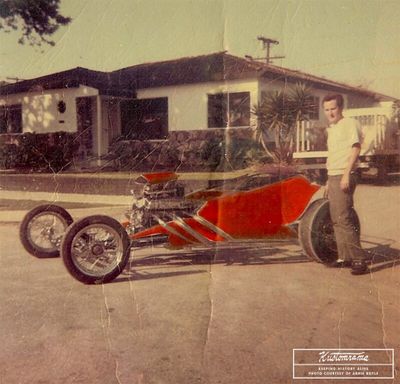
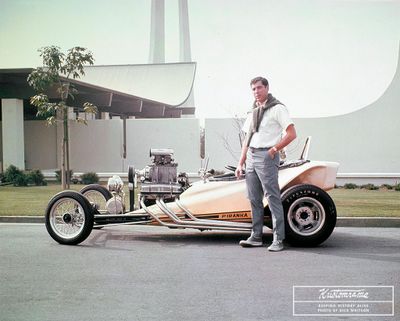

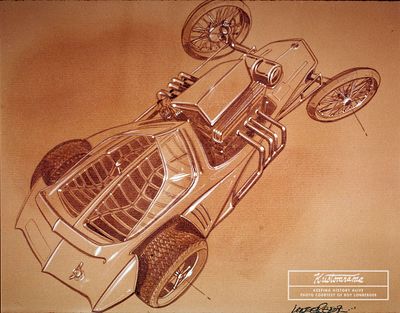

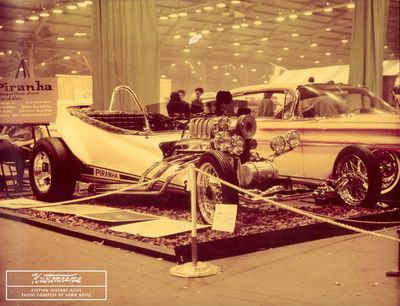

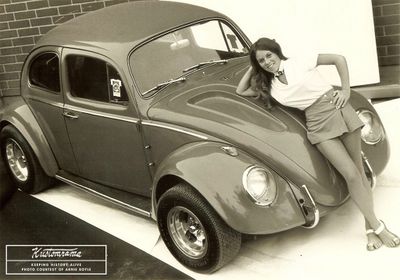
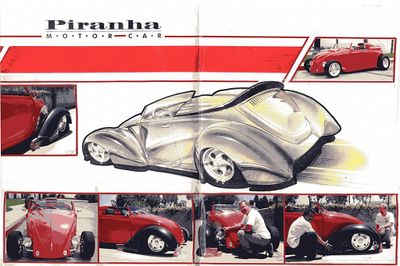
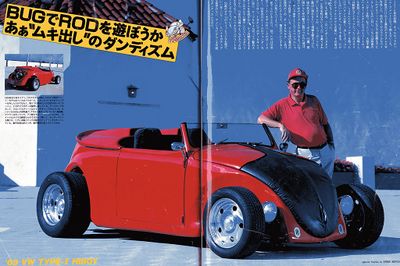
The Piranha was a Competition Street Roadster built by Arnie Boyle of Montebello, California. A joint venture between Boyle and designer Roy Lonberger, the Piranha embodied a fusion of drag racing spirit and street-legal flair.
Contents
The Visionaries Behind the Piranha
Arnie was born and raised in Montebello, California, a suburb of East Los Angeles. He started the two-year project to build the Piranha in 1963. Arnie wanted to build a street rod that mimicked the aesthetics of a dragster. "It was his idea to build a street rod that looked like a dragster without a front radiator," Lonberger told Sondre Kvipt of Kustomrama in November of 2023. Arnie's groundbreaking idea included a rear-mounted radiator for cooling. A rigid tubular frame and aluminum sheet metal parts were built by Kenny Ellis and Speed & Sport in Santa Fe Springs. Roy first met Arnie after he had built the chassis. He was impressed with his enthusiasm and offered to help. Roy Lonberger's journey in the automotive world began in the streets of Compton, where his passion was fueled by frequent visits to the Barris Brothers in Lynwood. Working for Peep Jackson in exchange for lessons in custom paintwork, Lonberger honed his skills, eventually leading to prestigious roles as a designer for Ford and GM.[1]
Design and Development
The initial Piranha prototype was an assembly of riveted aluminum that served as the proof of concept. Lonberger was on leave from Ford Styling to go into the Military in 1963/64 when he met Arnie at North American Aviation in Downey, working as a designer for the Apollo spacecraft crew capsule. Lonberger's design expertise came to the fore as he refined this early version. "After proof of concept, I refined the design and built the fiberglass body," Lonberger recalled. The body was then covered in a transparent orange over a gold metallic over a pearl base, a hallmark of Lonberger's custom paintwork skills that gave the Piranha its distinctive and eye-catching appearance.[1] Power came from a Corvette engine with stainless steel headers. The total running weight of the car was 1470 lbs.
The Grand Debut
The Piranha was invited to be introduced at the 1964 Grand Nationals Roadster Show. This moment marked a significant milestone in the careers of both Boyle and Lonberger. Lonberger returned to Detroit in December of 1964 to begin a design job at the GM Styling Tech Center. A day before the five-day journey, Lonberger's Alfa Romeo was T-boned and totaled by a 1963 Ford Thunderbird. After the accident, Arnie gave Lonberger his 1956 Chevrolet Bel Air for the journey.[1]
Sold for Parts
In 1965, as the Vietnam conflict intensified, Arnie found his life taking a dramatic turn when he was drafted into the Army. His service took him far from the familiar streets of California, landing him in Japan. During this challenging period, Arnie faced a difficult decision back home. With his mother's health declining and financial pressures mounting, he was compelled to make a heart-wrenching choice. In need of funds to ensure his mother's care, Arnie made the tough decision to sell his beloved Piranha, not as a whole, but piece by piece for parts.[1]
The Unstoppable Optimism of Arnie Boyle
After his honorable discharge from the Army in 1970, Arnie returned to Newport Beach. It wasn't long before his relentless passion for automotive innovation led him to open Big House Speed Shop in Costa Mesa. This venture, however, was short-lived as he sold the shop to Bud Konklan just a year later, signaling the start of a new chapter in his career.[1]
Arnie's entrepreneurial spirit took a new turn with the formation of Fibertech in Costa Mesa. Here, he dove into the world of design and manufacturing, focusing on bolt-on speed and custom parts, with a particular emphasis on Volkswagen Beetles and Dune Buggies. Between 1972 and 1974, Arnie expanded his repertoire, venturing into the sale of various body parts, including wide flair VW fenders, air scoops, hoods, and dune buggies crafted by Wayne Hartman Fiberglass, also based in Costa Mesa.[1]
In 1995, A VW-based Piranha Motor Car that Thom Taylor had designed for Arnie was featured on the cover of VW Trends April 1995. The car, an open-wheeled roadster known as the "Piranha Phase 1," was available as a kit you could build yourself, or you could have Arnie build you a turn-key version of the Piranha to your specs. Arnie also built a fully-fendered roadster known as the "Piranha Phase 2."[2]
In a striking leap of innovation, 1980 saw Arnie invent a groundbreaking process to convert seawater into hydrogen, intended as a fuel source for automobiles, aircraft, and boats. Despite holding patents and the potential to revolutionize the industry, this invention had yet to be embraced by the mainstream as of 2024. However, undeterred by industry inertia, Arnie's drive and enthusiasm remained unquenched.[1]
Now in his 80s and living in Newport Beach, Arnie Boyle is a testament to unwavering optimism and energy. Roy Lonberger, reflecting on his long-time friend and colleague, remarked, "He is probably the most optimistic and energetic person I have ever met."Arnie's philosophy "If you can think it, you can make it happen," encapsulates the spirit that has driven his remarkable journey in the automotive world.[1]
References
Did you enjoy this article?
Kustomrama is an encyclopedia dedicated to preserve, share and protect traditional hot rod and custom car history from all over the world.
- Help us keep history alive. For as little as 2.99 USD a month you can become a monthly supporter. Click here to learn more.
- Subscribe to our free newsletter and receive regular updates and stories from Kustomrama.
- Do you know someone who would enjoy this article? Click here to forward it.
Can you help us make this article better?
Please get in touch with us at mail@kustomrama.com if you have additional information or photos to share about Arnie Boyle's Piranha Competition Street Roadster.
This article was made possible by:
SunTec Auto Glass - Auto Glass Services on Vintage and Classic Cars
Finding a replacement windshield, back or side glass can be a difficult task when restoring your vintage or custom classic car. It doesn't have to be though now with auto glass specialist companies like www.suntecautoglass.com. They can source OEM or OEM-equivalent glass for older makes/models; which will ensure a proper fit every time. Check them out for more details!
Do you want to see your company here? Click here for more info about how you can advertise your business on Kustomrama.





